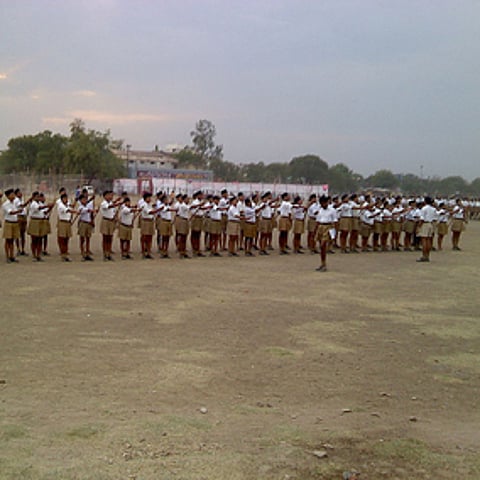Believers’ Dilemma – II
At the VHP office in Ayodhya I met a man who prided himself for being part of the mob which demolished the Babri mosque on the morning of 6 December 1992. Unfortunately, for the 58-year-old Hazari Lal, he fell down along with one of the tombs and was buried in the debris. After he was rescued and many surgeries and a few jail terms later, he seems to be doing okay – except for a limp, a weakened right hand, and a damaged left eye, which has turned gray and sightless. He has never hated Muslims, he clarifies; in fact, his Teli ancestors, who spent their lives crushing oil, were themselves at the oppressed end of the caste system. Lal became passionate about the idea of a Ram temple after he first heard about the issue in the early 1980s at the RSS shakha in his village in Shahjahanpur, 300 kilometres west of Ayodhya. "There'll be a temple here before I die," he said with a faint smile, as he guided me around a replica of the temple that the VHP wants to build.
On 9 January 2016, BJP leader Subramanian Swami organised a two-day seminar at Delhi University. The aim of the seminar was to canvass support for building the Ram temple at Ayodhya. However, the response was muted with most participants agreeing that nothing could happen till the Supreme Court gave its verdict on the disputed land. In 2010, the Allahabad High Court had ruled that the site should be split into three parts – one each for Hindus, Muslims and the Nirmohi Akhara, a sect that represented the god Ram himself in the court proceedings. But the Supreme Court, in 2011, suspended the High Court ruling after the Hindu and Muslim groups appealed against the verdict. My trip to Ayodhya almost coincided with Swami's seminar. Among the people I met there was Acharya Satyendra Das, the head priest at the makeshift Ram Janmabhoomi temple. Das declared: "Jab tak rajneeti nahi hategi, mandir nahi banega." (A temple can't be built until we remove politics from the equation.)

